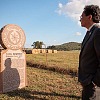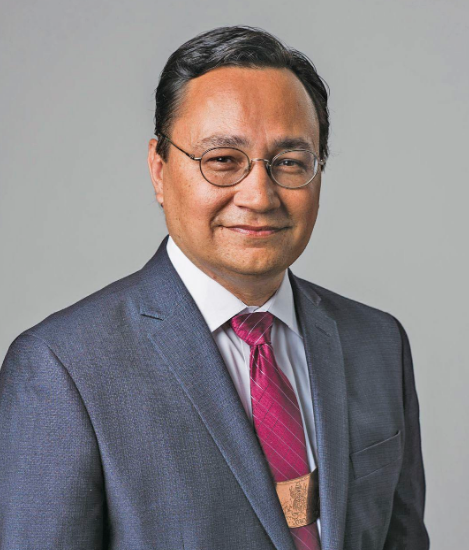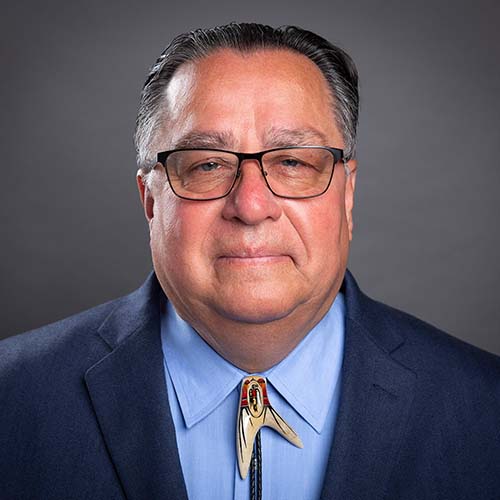
- Details
- By Chuck Hoskin Jr
Opinion. Every decision made at the Cherokee Nation — whether it’s from me, Deputy Chief Bryan Warner, the Council of the Cherokee Nation, or one of the thousands of Cherokee Nation employees who work tirelessly for our tribe — focuses through the lens of our core mission: to perpetuate Cherokee culture and build stronger, healthier communities.
Every effort to grow stronger, more prosperous Cherokee families is matched by efforts to revive, protect and preserve our cultural heritage with equal passion. The two are linked.
And this is more than just rhetoric. The Cherokee Nation identity, itself, balances between who we were and where we are going.

Recently, I signed the Cherokee Nation Historic Cemeteries Preservation Act, which I first proposed during my State of the Nation address in August, at a special ceremony at Park Hill Mission Cemetery. This law authorizes $925,000 annually to identify, document and restore historic Cherokee cemeteries.
The intent of the act is to grab hold and fortify the most tangible connection many Cherokees have to their ancestors. These are the resting places of Cherokees and their families who, against incredible odds, traveled to what is now the Cherokee Nation Reservation under forced removal by the U.S. government. Once here, they resowed the seeds of our tribe and established laws that would bind us as a Nation.
A comprehensive book documenting Cherokee Nation Historic Cemeteries will publish between 2026 and 2030. All identified historic cemeteries will be designated on the Cherokee Nation Registry of Historic Places, and Cherokees will gain new, unprecedented access to information about their ancestors’ sacred resting places.
Many Cherokees aren’t fortunate enough to grow up in proximity to Cherokee traditions. Whether due to physical distance or a family disconnection from tribal culture, it’s incumbent on us to welcome those who wish to understand or return to our culture.
For many, a burial site is the only physical connection they can explore outside of the Dawes Rolls or other paperwork.
Our most comprehensive attempt at identifying and documenting historic cemeteries, “Our People and Where They Rest,” was undertaken and published by James Tyner and Alice Timmons in 1969. The 12-volume series is indispensable for tribal descendants researching family trees and is the sole documentation of final resting places for many Cherokee ancestors.
Even for a stone marker, 55 years is too long to take for granted.
This cemeteries preservation effort aims to reestablish their work, build onto it and reclaim burial sites from the grip of time. Generations from now, Cherokees will connect to their cultural inheritance through these sacred sites. They will serve as a gateway, permitting all who wish to understand a Cherokee way of life.
The effort to inventory and share with our citizens vital information about our history is a Herculean effort, but it is really just the beginning. As we work to identify the state of historic Cherokee cemeteries, the new Act provides funds to begin restoration efforts on a priority basis. Best of all, the Act encourages us to use partners, including Gadugi Corps volunteers, to do all of this work. This can truly be a national effort.
The passion for this project — for guarding our cultural heritage — comes from a deep belief in rooting progress in culture. My administration and the Council of the Cherokee Nation walk in lockstep behind this belief. We know that the only way to be sure in our direction tomorrow is to know the course that got us here today.
Chuck Hoskin, Jr. is the principal chief of the Cherokee Nation.
More Stories Like This
Thanksgiving: Part of "Broken Circle Holiday"Thanksgiving is a Tradition. It's Also a Lie
Decisions About Us, Without Us: Education Dismantling Ignores Tribal Nations
What the Seismic Shift in Indian Education Could Mean
Cherokee Nation Helps Make Rural Transit Possible
Help us tell the stories that could save Native languages and food traditions
At a critical moment for Indian Country, Native News Online is embarking on our most ambitious reporting project yet: "Cultivating Culture," a three-year investigation into two forces shaping Native community survival—food sovereignty and language revitalization.
The devastating impact of COVID-19 accelerated the loss of Native elders and with them, irreplaceable cultural knowledge. Yet across tribal communities, innovative leaders are fighting back, reclaiming traditional food systems and breathing new life into Native languages. These aren't just cultural preservation efforts—they're powerful pathways to community health, healing, and resilience.
Our dedicated reporting team will spend three years documenting these stories through on-the-ground reporting in 18 tribal communities, producing over 200 in-depth stories, 18 podcast episodes, and multimedia content that amplifies Indigenous voices. We'll show policymakers, funders, and allies how cultural restoration directly impacts physical and mental wellness while celebrating successful models of sovereignty and self-determination.
This isn't corporate media parachuting into Indian Country for a quick story. This is sustained, relationship-based journalism by Native reporters who understand these communities. It's "Warrior Journalism"—fearless reporting that serves the 5.5 million readers who depend on us for news that mainstream media often ignores.
We need your help right now. While we've secured partial funding, we're still $450,000 short of our three-year budget. Our immediate goal is $25,000 this month to keep this critical work moving forward—funding reporter salaries, travel to remote communities, photography, and the deep reporting these stories deserve.
Every dollar directly supports Indigenous journalists telling Indigenous stories. Whether it's $5 or $50, your contribution ensures these vital narratives of resilience, innovation, and hope don't disappear into silence.
 The stakes couldn't be higher. Native languages are being lost at an alarming rate. Food insecurity plagues many tribal communities. But solutions are emerging, and these stories need to be told.
The stakes couldn't be higher. Native languages are being lost at an alarming rate. Food insecurity plagues many tribal communities. But solutions are emerging, and these stories need to be told.
Support independent Native journalism. Fund the stories that matter.
Levi Rickert (Potawatomi), Editor & Publisher
